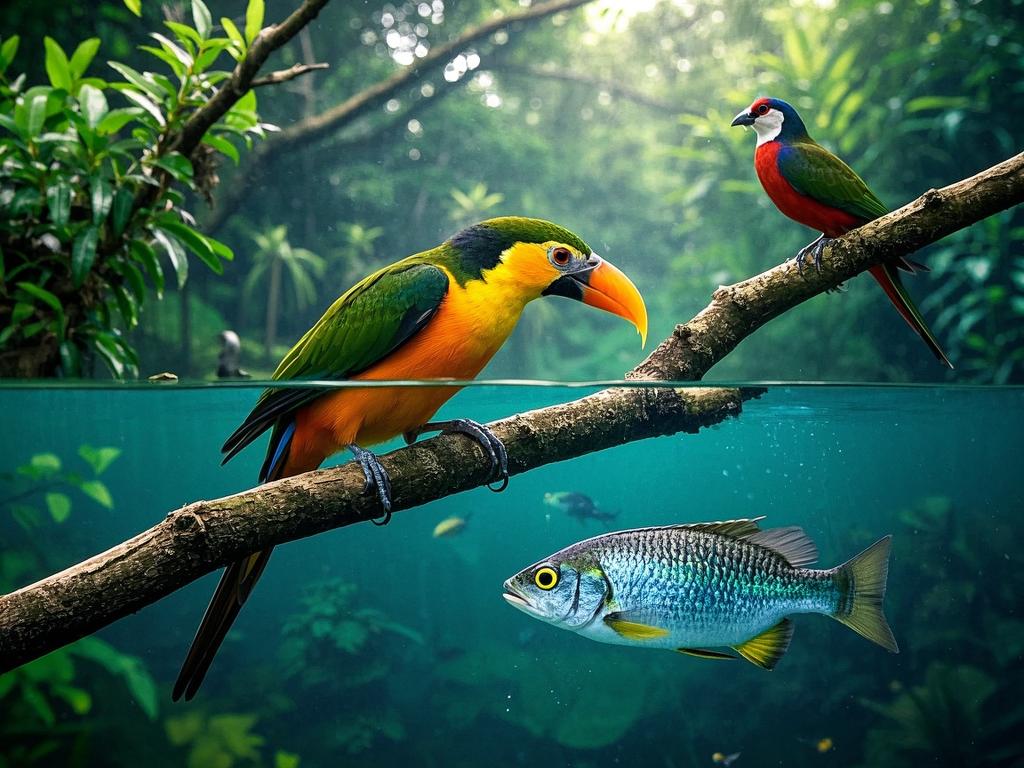
Comparing the Wildlife in the Amazon and the Amazonian Basin
The Amazon rainforest, often hailed as the "lungs of the Earth," is a realm of unparalleled biodiversity. Spanning across nine countries in South America, the Amazon and its basin are home to an astonishing array of wildlife. Let's embark on a journey to compare the wildlife treasures of these two interconnected yet distinct ecological regions.
First off, the Amazon rainforest proper is a vertical wonderland. Towering trees reach towards the heavens, creating a multi - layered ecosystem. The canopy layer, which can be up to 50 meters above the forest floor, is a bustling metropolis for countless species. It's estimated that about half of the world's plant and animal species live in the Amazon's canopy. This is where you'll find the iconic howler monkeys, whose deafening calls can be heard for miles. These monkeys have a specialized hyoid bone that allows them to produce such loud vocalizations, which they use for territorial disputes and communication within their troops.
Moving down to the understory, we encounter a different set of characters. This layer is filled with shade - loving plants and animals that have adapted to the low light levels. The jaguar, the largest cat in the Americas, prowls through the underbrush. With its powerful build and stealthy hunting skills, it's the apex predator of the Amazon. Jaguars are known for their ability to take down large prey, including caimans and deer. Their spots, or rosettes, are not only beautiful but also serve as excellent camouflage in the dappled light of the understory.
Now, let's turn our attention to the Amazonian Basin. The basin includes not only the rainforest but also vast floodplains, rivers, and lakes. The Amazon River, the largest river by volume in the world, is a lifeline for countless species. The pink river dolphin, or boto, is a charismatic inhabitant of these waters. These dolphins have a unique ability to change the color of their skin, which they use for communication and thermoregulation. They are also known for their acrobatic displays, leaping out of the water with grace.
In the floodplains, we find a rich variety of fish species. The piranha, often portrayed as a blood - thirsty predator in popular culture, is just one of many fish that call the Amazonian Basin home. While piranhas are indeed carnivorous, they play an important role in the ecosystem by controlling populations of other fish. There are also electric eels, which can generate powerful electric shocks to stun prey or defend themselves. These eels are capable of producing up to 600 volts of electricity, making them one of the most electrogenic animals on the planet.
One of the most significant differences between the wildlife in the Amazon rainforest and the Amazonian Basin lies in their adaptability to different environmental conditions. The rainforest dwellers are highly adapted to life in the trees, with prehensile tails (like those of monkeys) and sharp claws for climbing. In contrast, the animals in the basin have adapted to a life in water or on the floodplains. The river - dwelling species have streamlined bodies for efficient swimming and gills to extract oxygen from the water.
Another aspect to consider is the impact of human activities. Deforestation in the Amazon rainforest is a major threat to its wildlife. Vast areas of the forest are being cleared for agriculture, logging, and infrastructure development. This has led to a significant decline in the populations of many species, such as the golden lion tamarin, a small monkey native to the Atlantic rainforest in Brazil, which is now critically endangered due to habitat loss.
In the Amazonian Basin, pollution and overfishing are taking a toll on the aquatic wildlife. Industrial waste and agricultural runoff are contaminating the rivers, affecting the health of fish and other aquatic organisms. Overfishing, especially of valuable species like the arapaima, a large freshwater fish, is depleting populations at an alarming rate.
But amidst these challenges, there is also hope. Conservation efforts are underway in both the Amazon rainforest and the Amazonian Basin. National parks and reserves have been established to protect large areas of these ecosystems. For example, the Amazon Rainforest National Park in Peru is home to a diverse range of wildlife and provides a safe haven for many endangered species.
Moreover, sustainable development initiatives are emerging. These aim to balance economic growth with environmental protection. For instance, ecotourism projects are being developed in the Amazon, allowing visitors to experience the beauty of the wildlife while also providing income for local communities. This way, local people have an incentive to protect the environment and the wildlife that depends on it.
In conclusion, the wildlife in the Amazon rainforest and the Amazonian Basin are both remarkable and unique. They have evolved to thrive in different parts of this vast ecological complex. However, they are facing numerous threats from human activities. It's up to us, as global citizens, to take action to protect these precious ecosystems and the incredible wildlife that calls them home. Whether it's supporting conservation efforts, reducing our consumption of products that contribute to deforestation and pollution, or simply spreading awareness about the importance of the Amazon, every little bit helps. So, let's all do our part to ensure that the wildlife of the Amazon and the Amazonian Basin continue to amaze and inspire future generations.

